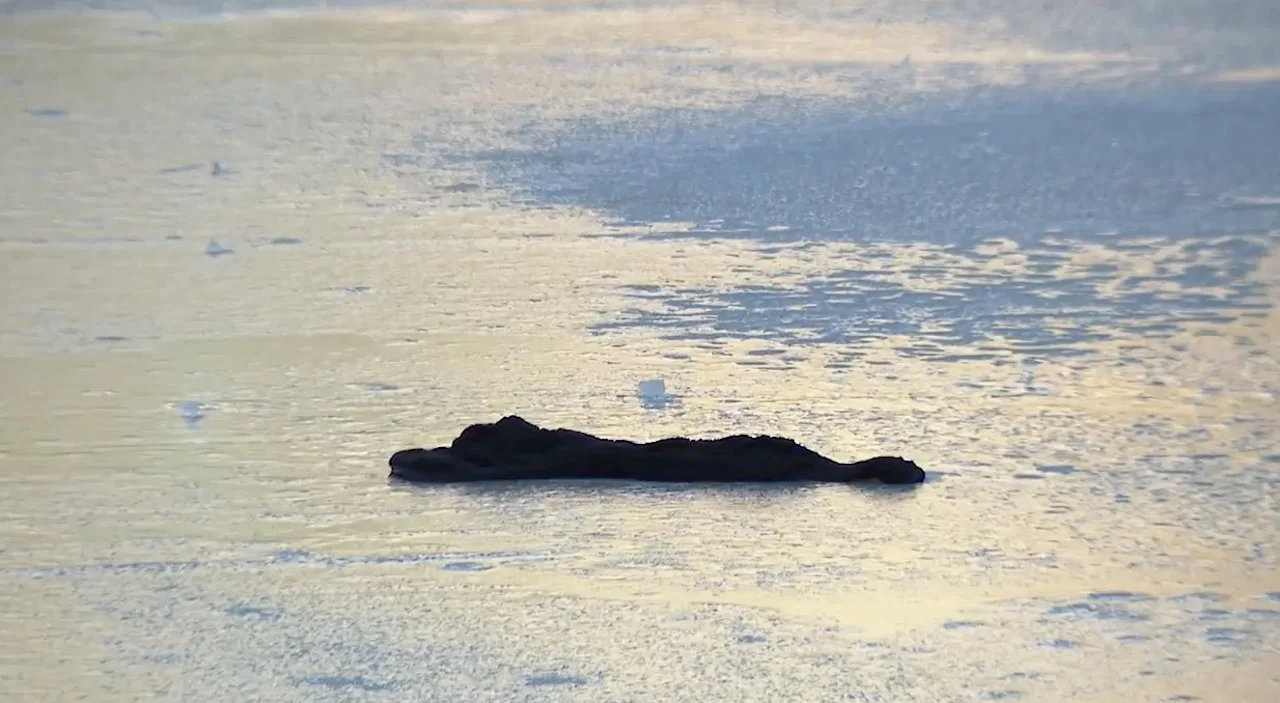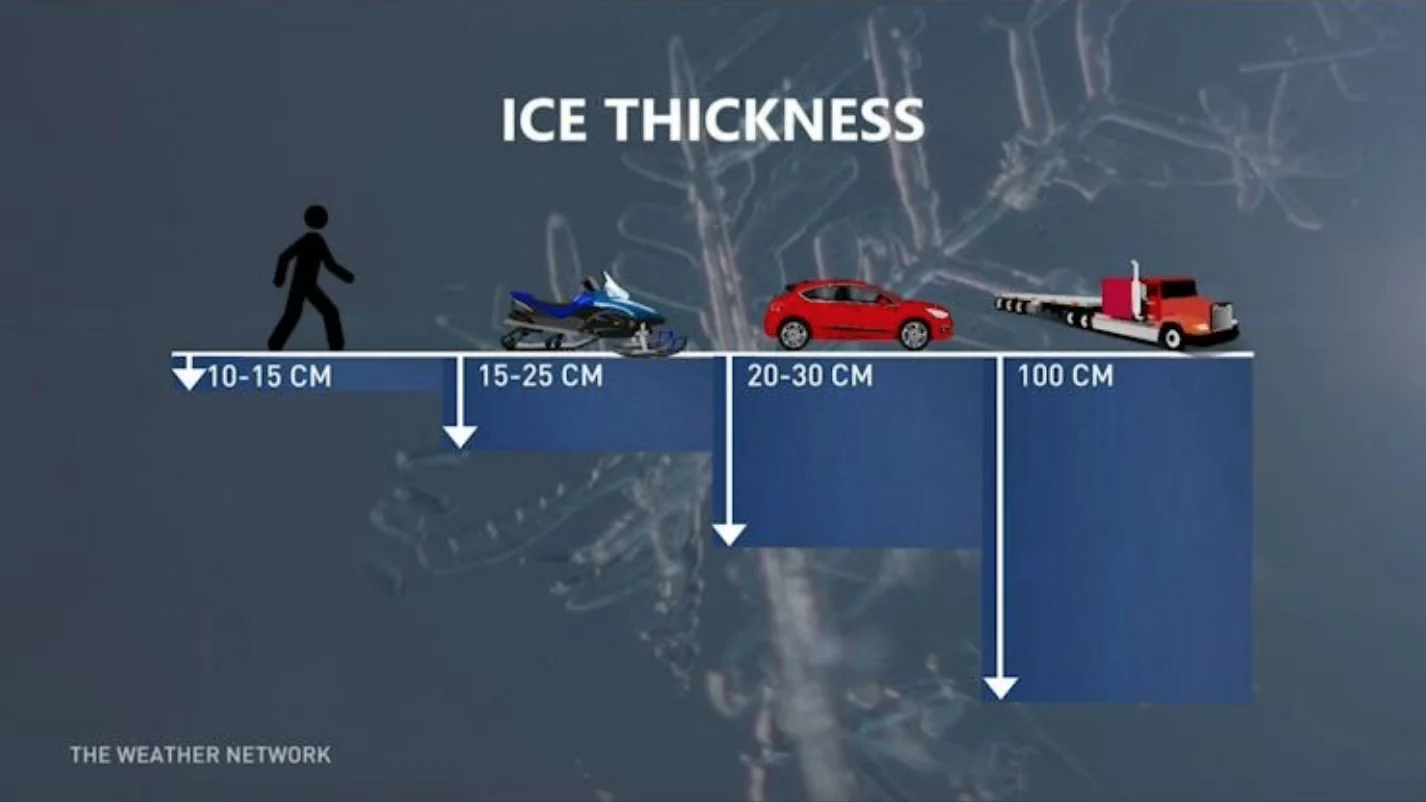
Bystanders save three children who plunged through icy pond
According to the Arapahoe County Sheriff’s Office, a woman close to the pond quickly sprang into action and jumped in to pull two of the three children from the icy waters, while the third child was rescued by a teenager.
The quick actions of bystanders saved the lives of three children who had fallen through an icy pond.
On Sunday afternoon, three children Arapahoe County, Colo., were playing on a frozen pond when they fell through the ice. According to the Arapahoe County Sheriff’s Office, a woman close to the pond quickly sprang into action and jumped in to pull two of the three children from the icy waters. The third child was rescued by a teenager.
SEE ALSO: Is it safe? How thick does ice need to be to walk or skate on?
South Metro Fire Rescue and the Arapahoe County Sheriff’s Department responded to the incident. CPR was utilized by first responders to resuscitate one of the children who was unconscious and not breathing. The child was taken to a hospital, where she was listed in stable condition, according to local media. All three kids survived the plunge.
It was reported that four children were playing on an icy pond situated on the property of an apartment complex when three of them then dropped through the ice.

(CNN)
The woman that jumped in and grabbed three of the children from the water was identified as 23-year-old Dusti Talavera, who pulled a four-year-old girl and an 11-year-old boy, but was unable to retrieve the six-year-old girl out of the water, the sheriff's office stated. At that time, a 16-year-old boy, related to the victim, dove into the water and pulled the girl to safety.
“I was looking out my window and saw a couple of kids walking on the ice pond. A few seconds later, I saw them fall in,” Talavera said at a press conference Monday. “Instinct was to go outside and help them.”
WHAT TO LOOK FOR BEFORE HEADING OUT ON THE ICE
The incident in Colorado is a stark reminder about ice safety and checking the thickness of it before venturing out on the frozen waterway.
So, how do you know if ice is safe enough to walk on?
Sources such as the Canadian Red Cross Society say that for ice to be considered safe to go out on, it should be of a particular thickness — at least 15 centimetres thick for a person to walk or skate on it, or 20 cm thick for a group of people, and at least 25 cm thick for snowmobiling.

There is a simple way to get a reasonable estimate of the ice thickness, which can be performed safely from the shoreline, without needing to get out a calculator. We can look at the ice colour.
The strongest and safest colour of ice is either blue or black. This is the ice that forms as the surface of the lake or pond directly freezes in cold weather. As a result, it is very dense.
If the ice is opaque white, it can appear safe, but that is not necessarily the case. White ice or 'snow ice' is white because it forms when a layer of wet snow freezes on top of blue ice that has already formed. Snow layers contain a lot of air, which end up as air bubbles trapped in the ice structure. White ice can be safe if the base layer of blue ice is thick enough. However, if you do not have a way of drilling down to see exactly how thick that blue ice is, it is probably best to avoid being out on it.
If the ice is grey or greyish, do not step out onto it. If the ice is any shade of grey, it is likely decaying or melting, and it is probably fairly thin and weak.
WATCH | SCIENCE BEHIND ICE SAFETY: MEASURING THICKNESS
WHAT TO DO IF YOU FALL IN?
The Canadian Red Cross also has a number of tips that can help you survive a fall through the ice, should it happen. If you are out on the ice alone and in trouble, here is what you should do:
Call out for help
Resist the urge to climb back where you fell in – the ice is weak there
Use the air trapped in your clothing to get into a floating position on your stomach
Reach forward onto the broken ice without pushing down; kick your legs and push your torso onto the ice flat
Once you are back on the ice, crawl on your stomach or roll away from the open area with your arms and legs spread out as far as possible to evenly distribute your weight. Do not stand up
Look for shore and make sure you are heading in the right direction
With files from Scott Sutherland, science writer/meteorologist at The Weather Network.
Thumbnail courtesy of CNN.
Follow Nathan Howes on Twitter.











